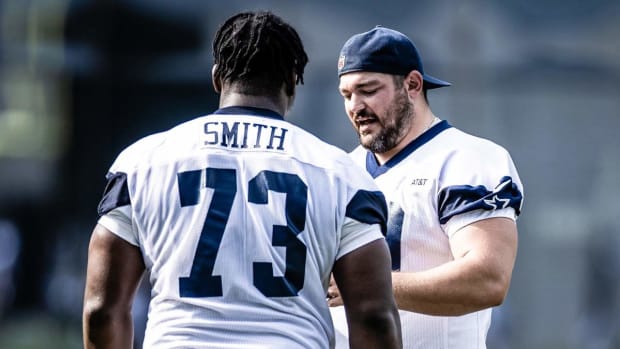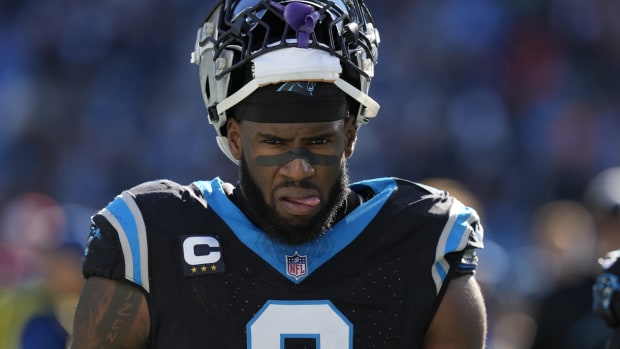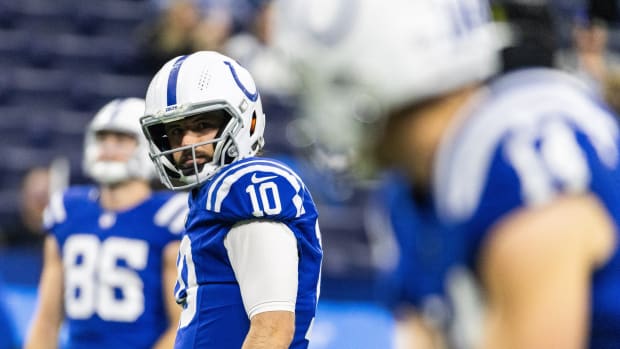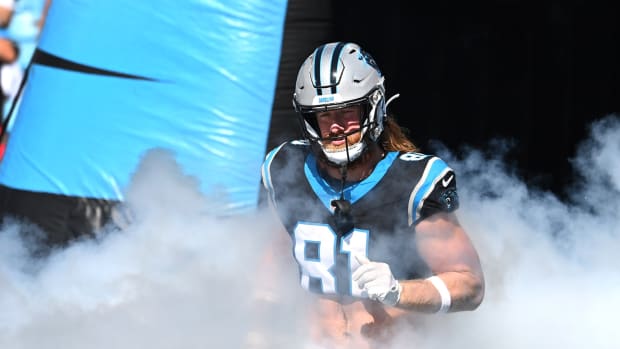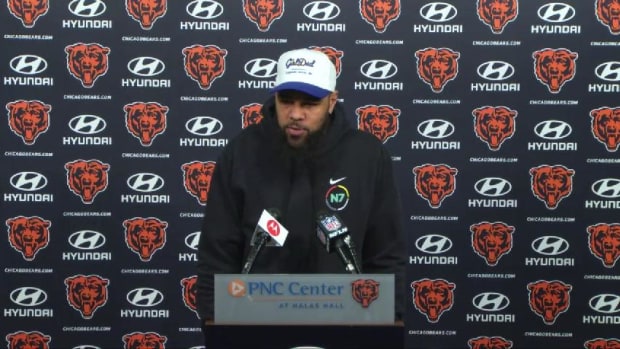Higher taxes will impact Rams employees in move to Los Angeles
The move from St. Louis to Los Angeles has many appealing qualities for Rams players, coaches and staff. Much warmer weather and a much larger fan base are among them. Higher taxes and a more expensive cost of living are not. Rams employees, in fact, will experience a substantial reduction in their take-home pay due to the team’s move. We believe this reduction, which is based not on employees’ merit or talents but only on the happenstance of where those employees work, should motivate the NFL and NFLPA to consider the adoption of tax and cost of living equivalency provisions.
When being paid the same is worth less
The impact is first detectable through income taxes. The relocation of the Rams to Los Angeles should prove to be a sizable economic win for the NFL, which has long sought to return to the nation’s second-largest TV market. The decision to relocate the Rams was made by the league and its owners, which under the NFL Constitution are empowered with the ability to relocate a team without the consent of NFL players. Nonetheless, players, along with coaches and staff, are clearly impacted by relocation.
• KING: The inside story how the Rams pulled off a move to Los Angeles
Rams employees paid a 6.0% state income tax and a 1.0% city income tax. These employees are now subject to a much higher income tax system in California. In fact, Rams employees who earn in excess of $1 million a year will now pay a 13.3% income tax to the State of California.
The resulting increase might not be all bad news since the additional state income taxes could be deductible on the employee’s federal income tax return, which would in turn reduce the federal tax. If however, the employee is subject to the Alternative Minimum Tax, then this deduction would not be available.
Not only will Rams players take home less money due to higher income taxes, but their cost of living will jump significantly as well. This cost can be measured through the cost of housing—which includes real estate values, property taxes and rental rates—and through everyday expenses for such things as gasoline, groceries and miscellaneous household items. According to CNN Money’s “Cost of Living Calculator” a person moving from St. Louis to Los Angeles will experience a startling 193% increase in housing costs, as well as a sizable 29% jump in transportation costs. This person will also pay more for groceries. Other cost of living calculators further illuminate the point that a dollar in St. Louis is effectively worth much less in Los Angeles. For instance, Bankrate.com concludes that a person moving from St. Louis to Los Angeles would need a salary increase of 51.7% to maintain the same standard of living.
Rams employees will feel the cost
Rams employees won’t be getting a 51.7% salary increase due to the move. In fact, as explained below, they likely won’t be receiving any increase. This means they will need to use much more of their take home pay, which will be less due to California’s taxes, to maintain the same standard of living they had in St. Louis.
While employment contracts between coaches and teams are private, there have been no reports of Rams’ coaches and staff receiving a salary bump on account of the franchise’s relocation. Rams players appear to be the same boat. Also, although Article 36 of the collective bargaining agreement stipulates that a player on a relocating franchise will receive reimbursement for moving expenses, the CBA does not contain language expressing that a player’s salary will be adjusted to account for accompanying changes in cost of living. No player contract is thought to contain such language, either. Remember, the absence of a salary increase to offset higher taxes and a higher cost of living is tantamount to a pay cut.
To illustrate this pay cut, consider how the Rams relocation will financially impact these notable Rams employees: Todd Gurley, Robert Quinn and the player whom Rams select with the 15th overall pick in next month’s draft. These employees will earn the same amount in Los Angeles this year as they would have been paid had the Rams remained in St. Louis. But that same amount will be worth a lot less:
As shown through the charts above, the differences in take home pay are substantial. To be clear, all three of these employees will remain “rich” in every financial sense of the word—they all earn far more than $435K, the approximate cut off of the top 1% of annual incomes in the U.S. Also, we fully appreciate that these players may have more and better endorsement opportunities by playing in Los Angeles than they had playing in St. Louis. These particular Rams players are poised to do well in endorsements. Indeed, as marketing consultant Tony Pace tells SI.com, “emerging stars like Todd Gurley and Robert Quinn could be front and center in marketing efforts involving the Rams." Still, “endorsement potential” is hard to empirically measure. Instead, based on what is measurable, these players absorb a massive financial hit due to the relocation.
The difference is significant enough to impact retirement savings, an especially important point considering that Gurley, Quinn and the player chosen with the 15th overall pick play in a league where the average playing career lasts only between 3–5 years (depending on which data is used). To be sure, these three Rams employees will earn a great deal of money while playing in the NFL. But that earning will most likely occur over a very short stretch of life. Then, as former NFL players, Gurley, Quinn and the player chosen with the 15th overall pick will almost certainly earn much less to cover what they hope are many decades left of life. Absorbing a de facto pay cut, therefore, is a meaningful cost for NFL players. The financial impact of the Rams relocation on an employee such as Rams head coach Jeff Fisher is likely less dramatic given that his lifetime earnings curve is much longer. As a 58-year-old NFL coach, Fisher has earned a healthy income for many years and should continue to do so. Still, the relocation is costing him real dollars.
• RAIOLA: For athletes, preparing for tax season is important business
The “cost” of relocation for Rams employees is very similar to that experienced by players who are traded to the Oakland Raiders or to the San Francisco 49ers. Likewise, a player drafted next month by the Rams, Raiders or 49ers will effectively take home less pay than if he was drafted in the same draft slot by the Miami Dolphins, Dallas Cowboys or another franchise based in a state without an income tax or with a more affordable cost of living. These financial consequences occur all the time, albeit for individual players as opposed to impacting all the employees of one franchise.
Equivalency clauses could bridge the gap
We believe the NFL and NFLPA should address financial disparities caused by taxes and cost of living variances among the 32 franchises. As demonstrated above, the disparities can be considerable and perhaps even life altering. The NFL and NFLPA have also negotiated clauses that reflect employment movement from one team to another. A player’s moving expenses are, as explained earlier, paid for when he is traded to a new team. The CBA also contains Article 32, which contemplates bonuses for players impacted by league expansion. It stands to reason the league and players’ association could devise policies to minimize financial penalties for players who are traded to more expensive locations.
One method for addressing these disparities would be for NFL contracts to contain tax and cost of living equivalency provisions. These provisions would call for compensation to be adjusted depending on tax and cost of living differences among the teams. A player traded to the Los Angeles Rams, for instance, would receive an automatic bump in pay to account for higher taxes and higher cost of living. It is possible such equivalency provisions could work the other way, meaning a player traded to, say, the Cincinnati Bengals (according to Forbes, the most affordable U.S. city with an NFL franchise), would receive a reduction in pay. It seems unlikely, however, the NFLPA would ever accept a formula that would permit reductions in player pay. Either way, equivalency provisions could be continuously adjusted to account for changes to taxes and cost of living figures.
Equivalency provisions may be especially needed if the NFL places a franchise in London, which, according to Expatisan.com, has a jaw-dropping 71% higher cost of living than St. Louis. They could also be helpful in free agency, as high tax rates in California and several other states have clearly been a factor in NFL free agency. Last year, Ndamukong Suh signed for $60 million guaranteed with Dolphins. That’s $36 million after taxes in Florida, since the state has no income tax. In order to match that “net after tax number’ the Lions would have to have paid him $65 million and the Raiders would have had to pay him $70.1 million (and eat further into their respective salary caps)
The SI Extra Newsletter Get the best of Sports Illustrated delivered right to your inbox
Subscribe
We recognize that equivalency provisions might present salary cap complications for teams in acquiring players. If the Rams have to “pay more” for a player than the Bengals, it could make it harder for the Rams to compete. To minimize those complications, we would also recommend that the NFL salary cap formula take into consideration state income tax rates. As it currently stands, teams that play in states without an income tax and/or with low cost of living have an advantage. A league as sophisticated as the NFL could likely work with the NFLPA on addressing those issues.
Michael McCann is a legal analyst and writer for Sports Illustrated. He is also a Massachusetts attorney and the founding director of the Sports and Entertainment Law Institute at the University of New Hampshire School of Law. He also created and teaches the Deflategate undergraduate course at UNH, serves as the distinguished visiting Hall of Fame Professor of Law at Mississippi College School of Law and is on the faculty of the Oregon Law Summer Sports Institute.
Robert Raiola is the senior manager of the Sports & Entertainment Group of the CPA and Advisory Firm PKF O’Connor Davies.
Joel Corry, an NFL contracts and salary cap expert, provided additional data and research.


































